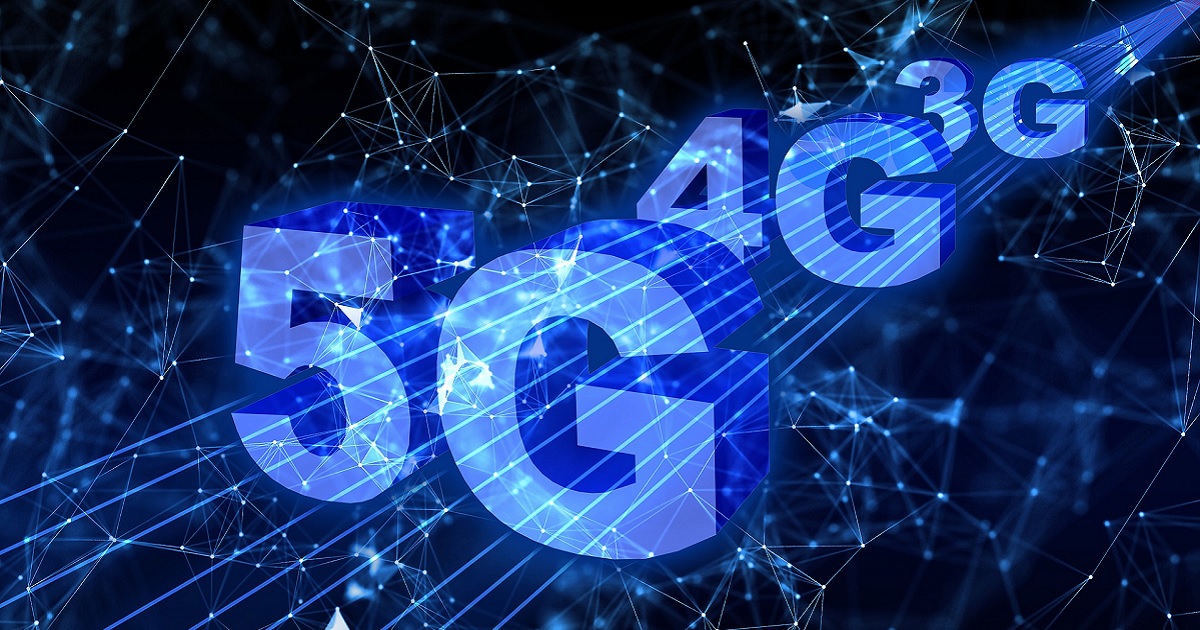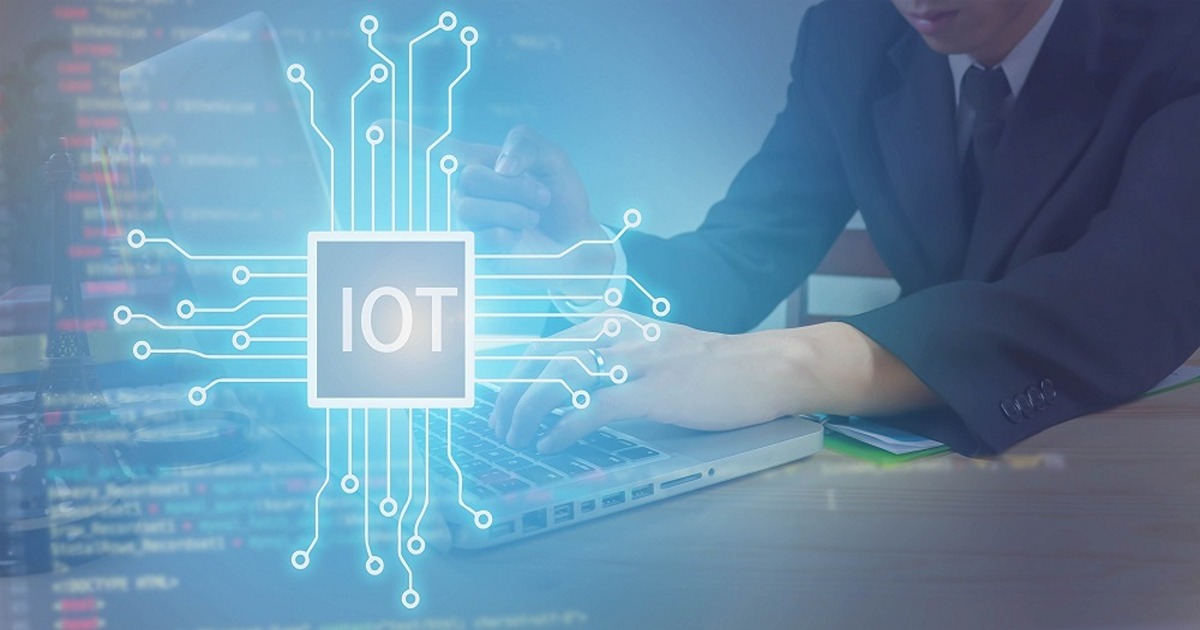
IoT Security
Article | October 11, 2023
The biggest IoT trends are likely to manifest in 2022 and beyond.
1. BLOCKCHAIN
The term blockchain is a new concept and is known as a single registry; agreed and distributed in several nodes of a network that will continue in force in the coming years in various activities.
2. MOBILE COMMERCE OR M-COMMERCE
It is part of electronic commerce that is carried out exclusively through mobile devices such as smartphones or tablets. The processes will be specialized. With mobile commerce comes the need for device management. Device management is a vital step to ensure security is promptly implemented.Mobile Device Management (MDM) solutions, also known as MDM, offer brilliant benefits across all areas.
3. TELEWORK AND DISTANCE EDUCATION
Academic and work activities that are carried out remotely, preferably from home, will continue to be applied in a fixed or hybrid way. A smart device(s) can be used from a remote location and therefore enable workers to more effectively manage time.
4. ROBOTIC PROCESSING AUTOMATIZATION
It is all technology-oriented to the use of software, with the aim of reducing human intervention in the use of computer applications, especially in repetitive tasks. This reduces the risk of human error and will also cut down management costs.
5. ARTIFICIAL INTELLIGENCE
It is the combination of algorithms proposed with the purpose of creating machines that have the same capabilities as humans, with the aim of doing a variety of tasks. If we decide to develop an Artificial Intelligence that has greater intelligence, responsibility and scalability, we can make the most of learning algorithms and interpretation systems. In this way, we are able to create value more quickly and with a greater business impact.
It is essential to have new techniques that achieve smarter AI solutions, that require less data, with greater ethical responsibility and more resilience.”
Gartner
6. DIGITAL TRANSFORMATION
Digital transformation is the change associated with the application of digital technologies in all aspects of human society, and especially in organizations. Accelerating business digital transformation requires entrepreneurs to step back and re-evaluate their plans. It’s about aligning the customer experience strategy with coordinated and detailed digitization plans of what needs to be done, by whom and when. To do this, having precisely identified the customer journey of your digital customer allows you a complete approach, for which tools such as the customer journey map is key.
7. FINTECH
It is a nascent industry in which companies use technology to provide financial services in an efficient, agile, comfortable and reliable way. They aim to expand bank penetration.
8. DATA ANALYSIS
It is the process by which raw data is analyzed in order to answer questions and reach practical conclusions that support an organization’s decision-making. Using predictive models and AI tools, we can run simulations that are based on real scenarios and information. Thanks to this, we obtain data on contexts that would be difficult, very expensive or impossible to test in physical environments. Big data is big money.
9. SOFTWARE DEVELOPMENT
Software development is generally considered part of the agile family of approaches, and is often used in combination with one or more other methods. Softwareon a smart device can also be upgraded to include better connectivity. In addition to its development, there is likely to be more outsourcing also.
10. ADVANCED MANUFACTURING OR INDUSTRY 4.0
It refers to a new business model in which the interconnection of integrated ICT systems both with each other and with the internet is key. The adoption of Industry 4.0 technologies and the training of personnel will be the greatest opportunities that industries, companies and governments will have in the next decade. Therefore, 2022 represents the next step to embrace technological transformation as an indispensable element for competitiveness, resilience, and development.
Read More

IoT Security
Article | June 27, 2023
The Industrial Internet of Things changes our view on the classic concept of production today. The largest manufacturing companies are eager to reach for technological solutions that streamline and increase the efficiency of production processes. With the development of subsequent technologies, interest in the concept of industry 4.0 increases, and thus, the number of connected devices. To meet the demand for infrastructure with adequate capacity and speed it was necessary to evolve towards the next generation of networks – 5G.
Read More

IoT Security
Article | June 28, 2023
Building resilient IoT networks: Exploring the top technologies for enhancing IoT security and protecting as well as safeguarding against evolving cyber threats in the interconnected era of Industry 4.0.
Contents
1. What is Network Resilience and Why is it Needed?
1.1 Continuous Operation
1.2 Mitigating Security Threats
1.3 Data Protection
1.4 System Availability
1.5 Risk Management
1.6 Regulatory Compliance
2. Factors to Consider for Network Resilience
3. Top Trends in IoT Security
3.1 Zero Trust and AI
3.2 Supply Chain Security
3.3 Network Segmentation and Segregation
3.4 Over-the-Air (OTA) Updates
3.5 Device Authentication and Authorization
3.6 Software-defined Networking (SDN) Security
3.7 Identity and Access Management (IAM)
4. Conclusion
1. What is Network Resilience and Why is it Needed?
Network resilience refers to the ability of an IoT network to withstand and recover from disruptions, attacks, or failures while maintaining its essential functions. It involves implementing measures to ensure the network remains available, reliable, and secure, even during security threats or unexpected events.
Ensuring network resilience is a critical aspect of IoT network security. Network resilience refers to the ability of an IoT network to withstand and recover from disruptions, attacks, or failures while maintaining its essential functions. Ensuring network resilience in IoT network security is crucial for the following reasons:
1.1 Continuous Operation
IoT networks often support critical applications and services that require uninterrupted operation. Network resilience ensures that these applications can continue functioning even during disruptions, such as network failures or security incidents. It minimizes downtime and ensures business continuity.
1.2 Mitigating Security Threats
IoT networks are susceptible to various cybersecurity threats, including malware, unauthorized access, or Distributed Denial of Service (DDoS) attacks. Network resilience measures help mitigate these threats by implementing security controls, monitoring network traffic, and enabling prompt detection and response to security incidents.
1.3 Data Protection
IoT devices generate and transmit vast amounts of sensitive data. Network resilience safeguards data integrity, confidentiality, and availability by implementing secure communication protocols, encryption mechanisms, and access controls. It ensures that data remains protected even during network disruptions or security breaches.
1.4 System Availability
IoT systems often rely on real-time data processing and communication. Network resilience ensures that data flows seamlessly, allowing IoT devices to exchange information and execute tasks without interruptions. It supports critical functions such as monitoring, control, and decision-making processes.
1.5 Risk Management
Building network resilience helps organizations effectively manage risks associated with IoT deployments. By identifying vulnerabilities, implementing protective measures, and having response plans in place, organizations can minimize the impact of security incidents, reduce financial losses, and maintain the trust of stakeholders.
1.6 Regulatory Compliance
Many industries have specific regulations and standards governing the security and resilience of IoT networks. By ensuring network resilience, organizations can demonstrate compliance with these requirements, avoiding penalties, legal issues, and reputational damage.
2. Factors to Consider for Network Resilience
Implementing redundancy and failover mechanisms within the network infrastructure helps mitigate the impact of single points of failure. This involves deploying backup systems, redundant network paths, and failover mechanisms to ensure continuous operation despite a failure or attack. Traffic Monitoring and Anomaly Detection for Continuous network traffic monitoring helps identify abnormal patterns or behaviours that may indicate security threats or attacks. By leveraging intrusion detection and prevention systems (IDPS) and traffic analysis tools, organizations can promptly detect and respond to network anomalies, safeguarding network resilience. Moreover, segmentation and Isolation: Dividing the IoT network into segments or zones and isolating critical devices or systems from less secure ones enhances network resilience. Implementing proper network segmentation, VLANs (Virtual Local Area Networks), or software-defined networking (SDN) enables effective control, containment, and mitigation of security incidents.
DDoS attacks significantly threaten network resilience by overwhelming the network's resources and causing service disruption. Deploying robust DDoS protection measures, such as traffic filtering, rate limiting, and traffic diversion, helps mitigate the impact of such attacks and ensures network availability. Incident Response and Establishing comprehensive incident response and recovery plans specific to IoT network security incidents is crucial. These plans should outline clear procedures, roles, and responsibilities to efficiently respond to and recover from security breaches or disruptions, minimizing downtime and maintaining network resilience. In addition, regular penetration testing, vulnerability assessments, and network audits help identify weaknesses and vulnerabilities in the IoT network infrastructure. Promptly addressing these issues through patches, updates, and security configuration adjustments strengthens network resilience by proactively addressing potential security risks.
By implementing these measures, organizations can enhance the resilience of their IoT networks, ensuring continuous operation, prompt threat detection, and effective response to security incidents. Network resilience plays a vital role in maintaining IoT systems' integrity, availability, and reliability in the face of evolving security challenges.
3. Top Trends in IoT Security
3.1 Zero Trust and AI
Zero Trust is an emerging security concept that assumes no implicit trust towards devices or users, even if they are already inside the network perimeter. Implementing Zero Trust principles in IoT networks can help mitigate the risks associated with compromised devices and unauthorized access for IoT security. In order to bolster cybersecurity measures, adopting a zero trust approach. Effectively addressing cybersecurity challenges entails not merely technological solutions but a comprehensive organizational strategy rooted in cultural and policy frameworks. Emphasizing the zero trust concept underscores the importance of policy implementation throughout the entire organization, complementing technological measures.
3.2 Supply Chain Security
The complex and interconnected nature of IoT supply chains introduces security risks. The supply chain for IoT devices involves multiple stages, including device manufacturing, software development, distribution, and deployment. Each stage presents potential security risks that can compromise the integrity and security of the IoT network. This includes adopting secure supply chain management practices, such as verifying the security practices of suppliers and manufacturers, and establishing clear security requirements and standards for the entire supply chain. Conducting third-party risk assessments helps evaluate the security posture of suppliers and vendors to identify any potential vulnerabilities or weaknesses.
3.3 Network Segmentation and Segregation
In IoT security, minimizing the potential impact of a compromised IoT device is crucial, and network segmentation and segregation play a vital role in achieving this goal. Network segmentation involves dividing the network into separate zones or segments, based on factors such as device type, functionality, or security requirements. The containment strategy helps minimize the impact of a security breach by isolating compromised devices and preventing lateral movement within the network.
3.4 Over-the-Air (OTA) Updates
Software updates play a critical role in maintaining the integrity and security of IoT devices. IoT devices frequently require updates to address software bugs, patch vulnerabilities, or introduce new features. Over-the-Air (OTA) update mechanisms are being enhanced with robust security measures to ensure the secure delivery and installation of updates. Code signing is a prevalent practice where updates are digitally signed with cryptographic keys to verify the authenticity and integrity of the software. Secure boot is another important mechanism that establishes a chain of trust during the device boot-up process, ensuring that only authorized and tamper-free software is loaded onto the device.
3.5 Device Authentication and Authorization
The increasing number of IoT devices poses a significant challenge in ensuring secure and trusted authentication and authorization. Two-factor authentication (2FA), for example, adds an extra layer of protection by requiring users or devices to provide two separate forms of authentication, such as a password and a unique code sent to a mobile device. Digital certificates, on the other hand, enable secure and trusted device authentication by leveraging public key infrastructure (PKI) technology. Each IoT device is issued a unique digital certificate, which serves as a digital identity, allowing for secure communication and verification of device authenticity.
3.6 Software-defined Networking (SDN) Security
Securing Software-defined Networking (SDN) environments is paramount to protect IoT deployments. SDN offers centralized control and management of network resources, providing flexibility and scalability. This ensures that only authorized entities can access and make changes to the SDN infrastructure, preventing unauthorized access and configuration changes. Additionally, continuous traffic monitoring and analysis enable the detection of suspicious activities and potential security breaches. Encryption IoT standards and protocols should be employed to secure communication between the SDN controller, switches, and IoT devices, safeguarding data privacy and integrity. Network segmentation within the SDN environment helps limit the impact of security breaches, reducing the attack surface.
3.7 Identity and Access Management (IAM)
Implementing IAM solutions, such as role-based access control (RBAC) and multi-factor authentication (MFA), within IoT networks significantly enhances network security. IAM ensures that only authorized individuals can access and interact with IoT devices and systems. RBAC enables administrators to assign specific access privileges based on user roles and responsibilities, reducing the risk of unauthorized access. Additionally, incorporating MFA adds an extra layer of security by requiring users to provide multiple forms of authentication, such as a password and a unique token or biometric verification. This significantly reduces the risk of unauthorized access even if a user's credentials are compromised.
4. Conclusion
The technologies discussed in this article play a crucial role in enhancing IoT network security and resilience. By leveraging these technologies, organizations can mitigate the risks associated with IoT deployments, protect against cyber threats, and ensure the reliability and continuity of their IoT networks. As the IoT landscape evolves, staying up-to-date with these top technologies will be essential for organizations to maintain a robust and secure IoT infrastructure.
The transformative landscape of Industry 4.0 demands strong network security in IoT environments. The top technologies discussed in this article empower organizations to enhance network resilience, protect against cyber threats, and ensure the uninterrupted functioning of IoT networks. Embracing these technologies and staying ahead of emerging threats, helps organizations build a secure foundation for their IoT deployments and capitalize on the vast opportunities offered by the IoT ecosystem.
Read More

Enterprise Iot
Article | July 19, 2022
The concept of "never trust, always verify" is the foundation of the relatively new security architecture known as "zero trust." Zero trust requires that all users and devices be verified every time they connect, even from inside the "moat," in contrast to the conventional castle-and-moat security architecture, which automatically trusts users and devices located within a network's perimeter.
Companies are being forced to reconsider how they safeguard their networks by the internet of things (IoT). Unmanaged smart gadgets connected to the internet expand the number of potential access points for hackers to compromise your security when they are added to a network.
Zero Trust Security Expansion for IoT
After establishing it for users and their devices, organizations must extend zero-trust security to cover unmanaged, non-user devices too. To do this, they require zero trust identity management technologies that automatically register devices, issue credentials, and offer password-less authentication.
Device Visibility
A device may be infected with malware or have a security breach if performance problems or bugs start to appear frequently. In addition, a malfunctioning device may be more vulnerable to attack. Therefore, organizations require device health monitoring that can automatically identify problems and flag them for remedy in order to establish and maintain zero trust security for IoT. Some cutting-edge solutions can also automatically prevent an impacted device from making further connection attempts or carrying out corrective actions without requiring human participation.
The Principle of Least Privilege (PoLP)
The principle of least privilege (PoLP), which argues that any user or device should only obtain the bare minimum access privileges necessary to perform their job functions, is widely used in conjunction with zero trust security. Therefore, organizations must establish the minimal level of network access required for each device to carry out its functions before limiting its potential privileges in order to deploy PoLP for IoT. Implementing identity and access management (IAM) tools and guidelines that support zero trust and PoLP for devices is one approach to accomplishing this.
Security Monitoring
There are other zero-trust security monitoring programs created especially for IoT, such as Palo Alto Networks' IoT Security, which was previously discussed. Businesses can also utilize tools to monitor devices and network traffic, such as next-generation firewalls and intrusion detection and prevention systems (IDS/IPS). The zero trust security solution for IoT must include monitoring in addition to as much automation as possible so that threats can be identified, contained, and remedied even when no one is there to press a button or disconnect a device manually.
One of the leading causes of zero trust security projects failing over time is that people stop adhering to them once they get complicated. This is especially true for IoT security that operates on zero trust. In addition, it can be logistically challenging to keep remote, unmanaged devices at zero trust.
Read More